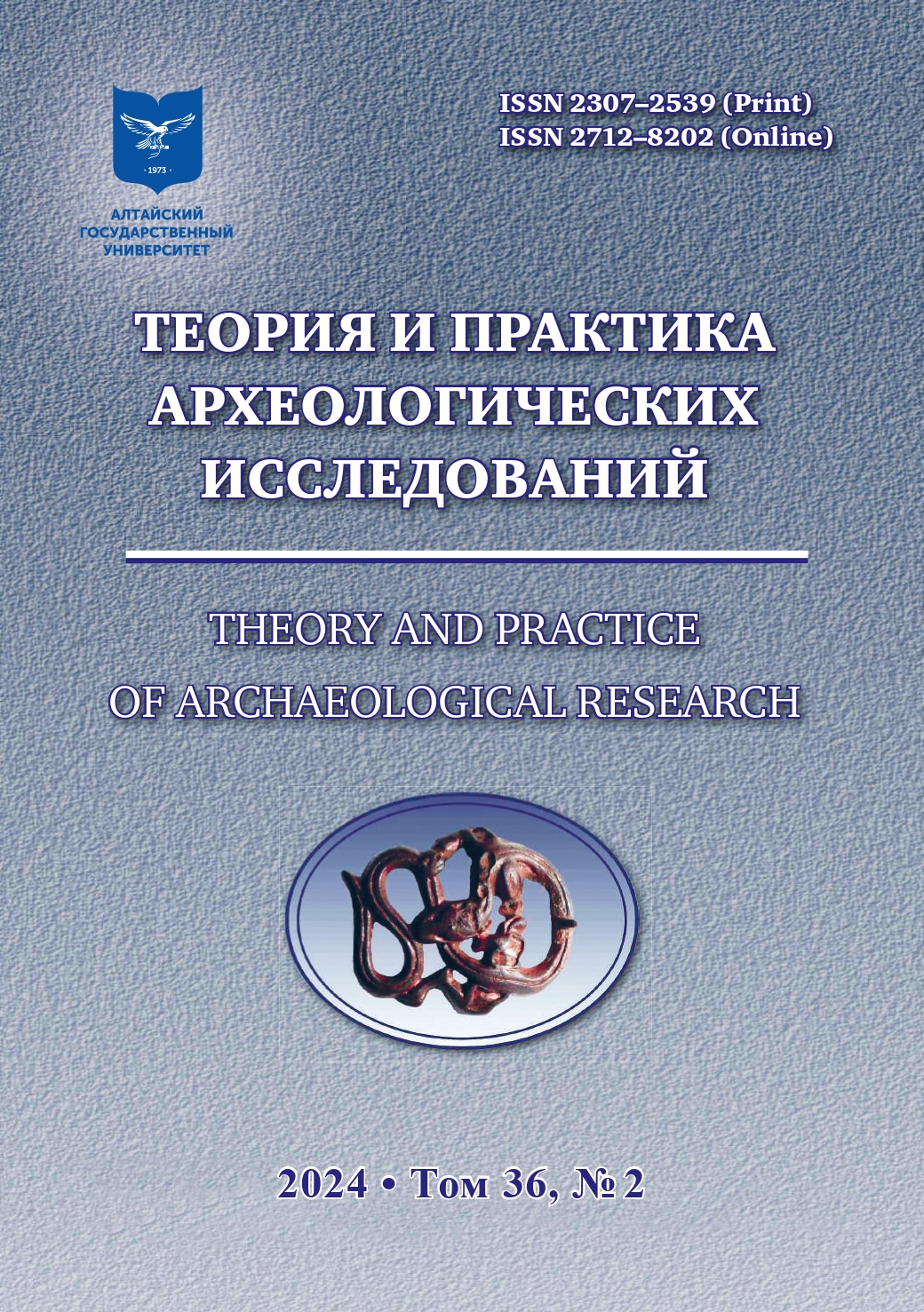ЭВОЛЮЦИЯ ПОГРЕБАЛЬНЫХ ПАМЯТНИКОВ ГОРЦЕВ ВОСТОЧНОГО АФГАНИСТАНА XX–XXI ВВ.
Аннотация
В статье дан очерк изменения погребальных сооружений западнодардских и нуристанских народов, проживающих в Восточном Афганистане, за последние 100 лет. Исследование базируется на фотоматериалах экспедиций прошлого столетия, а также на материалах поездки С.И. Каверина в 2023 г. в провинции Кунар и Нуристан. Создана классификация памятников, а также прослежено их развитие в течение времени. Было выяснено, что, будучи исламизированными относительно недавно, дардские и нуристанские народы сохраняли некоторые типы доисламских погребальных памятников до 2-й половины XX в. Именно с последних десятилетий прошлого столетия началась деградация погребального искусства горцев, связанная с утверждением исламского фундаментализма.
Дан сравнительный анализ сходства раннеисламских памятников Восточного Афганистана с заупокойными сооружениями Северного Пакистана, зоны проживания восточнодардских народов. Хотя два ареала разделены территорией округа Читрал, в прошлом возможно существование континуума, связанного с определенным типом погребальных памятников. Оказалось, что в среде паштунов данный комплекс исчез прежде, чем был изучен. Таким образом, подтверждено родство материальной культуры горцев Восточного Афганистана не только с таковой у восточных дардов, но и у паштунов Восточного Пригиндукушья.
Скачивания
Metrics
No metrics found.
Литература
Gryunberg A.L. To the Dialectology of the Dardic Languages (Grangali and Zemiaki). In: Indian and Iranian Philology. Issues of Dialectology. Moscow : Nauka, 1971. P. 3–29. (In Russ.)
Grуunberg A.L. Materials on Ethnography of the Dardic Peoples of the Eastern Hindukush (Digal valley). Kunstkamera. Etnograficheskie tetradi = Kunstkamera. Ethnographic notebooks. 1996;10:310–331. (In Russ.)
Grуunberg A.L., Steblin-Kamenskij I.M. Ethnolinguistic Characterization of the Eastern Hindukush. In: Mapping Problems in Linguistics and Ethnography. Leningrad : Nauka, 1974. P. 276–283. (In Russ.)
Cacopardo A.S. A World In-between: The Pre-Islamic Cultures of the Hindu Kush. In: S. Pello (ed.) Borders. Itineraries on the Edges of Iran. Eurasiatica. Quaderni di studi su Balcani, Anatolia, Iran, Caucaso e Asia Centrale 5. Venezia, 2016a. P. 243–270.
Cacopardo A.M. Fence of Peristan: The Islamization of the “Kafirs” and Their Domestication. Archivio per l’Antropologia e la Etnologia. 2016b;CXLVI:69–101.
Cacopardo A.M., Cacopardo A.S. (eds.). Gates of Peristan: History, Religion and Society in the Hindu Kush. Roma : Istituto Italiano per l’Africa e l’Oriente, 2001. 327 p.
Edelberg L. Nuristani Buildings. Aarhus : Jysk ark.ologisk selskab, Moesgard, 1984. 223 p.
Edelberg L., Jones S. Nuristan. Graz : Akademische Druck- und Verlagsanstalt, 1979. 185 p.
Klimburg M. The Kafirs of the Hindu Kush. Art and Society of Waigal and Ashkun Kafirs. Stuttgart : Franz Steiner Verlag, 1999. Vol. 1: 431 p.; Vol. II: 324 p.
Palwal A.R. History of Former Kafiristan. Part IV. Kafirs’ Cult of the Dead. Afghanistan. 1969;XXII(2):20–43.
Robertson G.S. The Kafirs of the Hindu-Kush. London : Lawrence and Bullen, 1896. 658 p.
Tegethoff R.C., Kaverin S.I. Documenting Grangali. In: Cacopardo A.M., Cacopardo A.S. (eds.). Roots of Peristan: The Pre-Islamic Cultures of the Hindukush/Karakorum. Part I. Roma : ISMEO, 2023. P. 433–452.
Wutt K. Pashai: Landschaft, Menschen, Architektur. Graz : Akademische Druck- und Verlagsanstalt, 1981. 127 p.
Copyright (c) 2024 А.З. Шмелёв, С.И. Каверин

Это произведение доступно по лицензии Creative Commons «Attribution» («Атрибуция») 4.0 Всемирная.
Авторы, публикующиеся в данном журнале, соглашаются со следующими условиями:
a. Авторы сохраняют за собой права на авторство своей работы и предоставляют журналу право первой публикации этой работы с правом после публикации распространять работу на условиях лицензии Creative Commons Attribution License, которая позволяет другим лицам свободно распространять опубликованную работу с обязательной ссылокой на авторов оригинальной работы и оригинальную публикацию в этом журнале.
b. Авторы сохраняют право заключать отдельные договора на неэксклюзивное распространение работы в том виде, в котором она была опубликована этим журналом (например, размещать работу в электронном архиве учреждения или публиковать в составе монографии), с условием сохраниения ссылки на оригинальную публикацию в этом журнале. с. Политика журнала разрешает и поощряет размещение авторами в сети Интернет (например в институтском хранилище или на персональном сайте) рукописи работы как до ее подачи в редакцию, так и во время ее редакционной обработки, так как это способствует продуктивной научной дискуссии и положительно сказывается на оперативности и динамике цитирования статьи








2.jpg)




